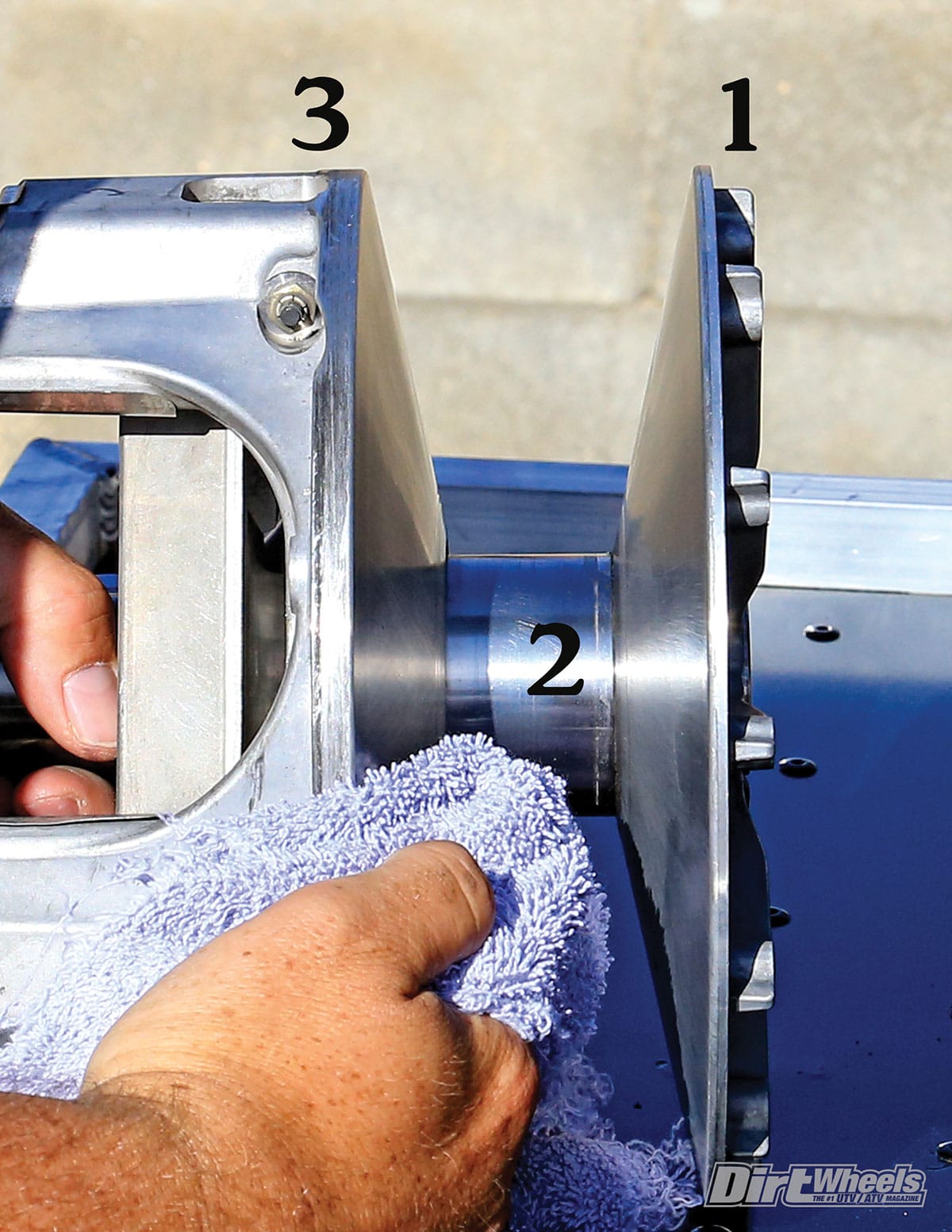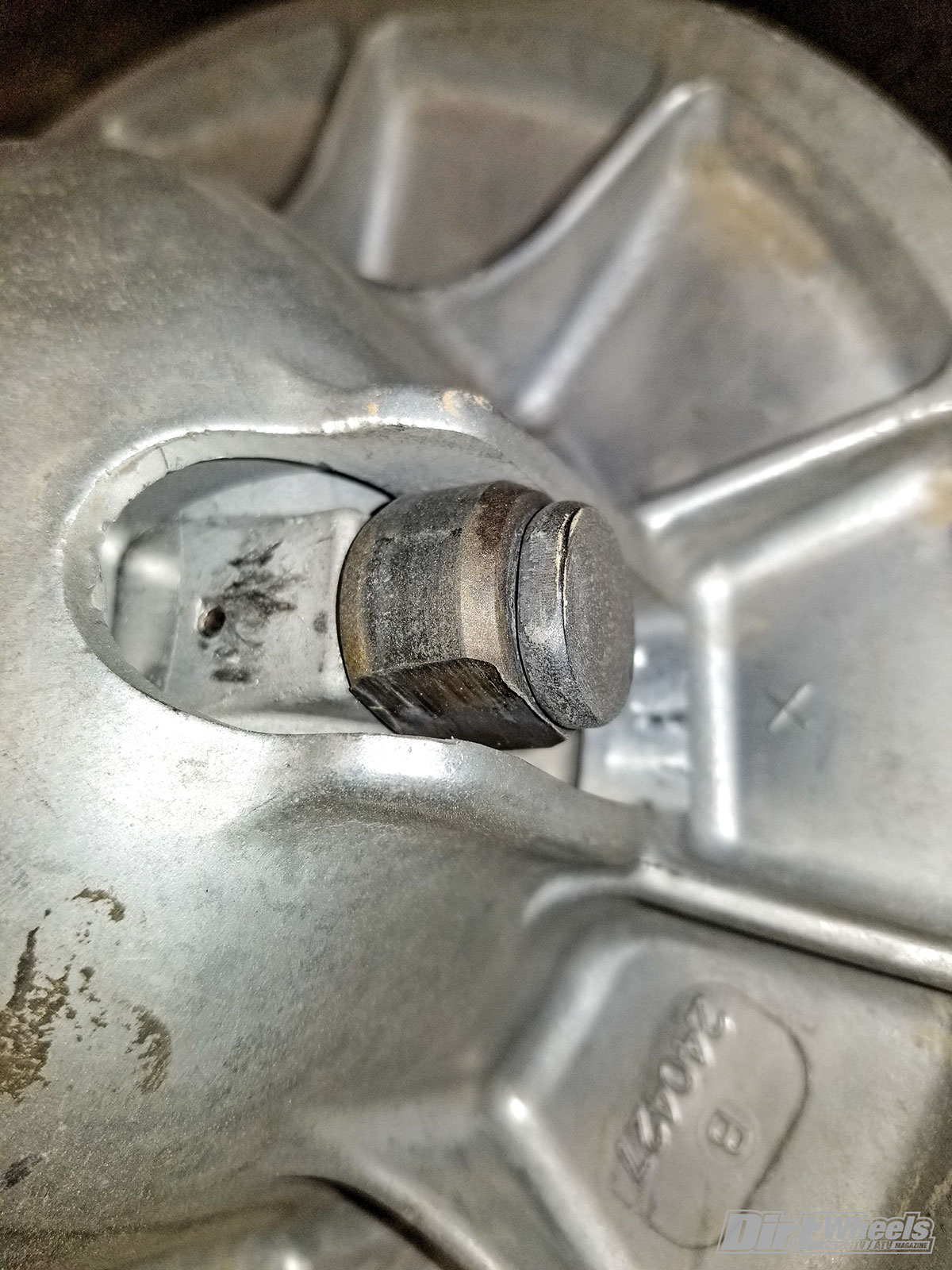CVT CLUTCH SYSTEMS
How they work and how to recognize problems
By Cameron Dickie
CVT CLUTCH SYSTEMS
CVT clutching may seem like magic: they work, but not many people understand how. They do not operate on spells and wizardry but on simple ratios. This is an article on learning the basics of how a clutch operates and answering some of your questions (based on Polaris-style clutches).
It may seem like a crazy thing to learn, but trust me, if I can understand how they operate, you can as well. The definition of a CVT clutch is an automatic clutch that can change seamlessly through a continuous range of gear ratios. Big words scare me, and I had to do some research on what they were trying to say, and here is my way of explaining it.
Everyone has ridden a bicycle that you can change gears on to go faster or slower. Well, imagine that your clutches are just like the gears on a bicycle, but instead of you pushing the lever to shift, it is continuously changing gears for you. The clutches open and close to create the different ratios, and the belt is your chain. It is as simple as that, but to understand clearly how they operate, we will go further in-depth.
CVT CLUTCH SYSTEMS
1. Primary clutch, aka drive clutch. The primary clutch will always be directly bolted to the crankshaft, as it is the first piece of the CVT system.
2. Secondary clutch. The secondary clutch will always be bolted to the transmission input, as it is the last part of the CVT system. It is also called the driven clutch because it is driven forward by the belt.
3. Belt. The belt is the link between the two clutches.
PRIMARY CLUTCH
1. The primary clutch has two sides to it. The stationary sheave will be closest to the engine and will not move from the position it is in. Its only job is to provide a surface area for the belt to ride up and down.
2. Next is the primary bearing. The job of this bearing is to provide an area where the belt can ride when the rpm is idle and not to come in contact with the sheaves.
3. The movable sheave is what closes onto the belt, forcing it to ride up the sheaves, creating the taller gear ratios so that you can accelerate.
When you give your machine throttle, that raises the rpm of the engine and causes the primary clutch to react. The reason it reacts is that the higher the rpm the faster the weights open causing the outside sheave to move towards the engine. Then to make the sheave close the primary spring applies pressure to make the weights go to their original position. With lighter or heavier weight, the clutch will open faster or slower and the same applies to the spring pressure.
CVT CLUTCH SYSTEMS
BELT
The belt is designed as a V-style belt to follow the sheaves up and down as they open and close. They are a cogged style belt to allow for flexibility as they go around the clutches and to generate more airflow as they rotate. The belt is made from a composite of rubber and strands of fibers, it is designed to fail at a certain point because you would rather have a $200 belt fail than have a $2000 clutch set fail. Without the belt, nothing would happen between the two clutches and the power of your machine would not reach the ground.
SECONDARY CLUTCH
The secondary clutch is a lot like the primary clutch in how it operates but the main difference is that it does not have weights to open it but that it uses a Helix ramp for the rollers to ride on. The Helix ramp provides a way for the clutch to open and close smoothly. It still has a spring to close the sheaves when the throttle is off.
The Helix will either back-shift down the ramp when the load is increased or upshift up the ramp when the load is decreased.
The clutches change ratios as you apply more throttle or as the load applied to the machine is changed. When the throttle is depressed, the primary clutches weights open, causing the outside sheave to move inward. This makes the belt ride up the primary sheaves and causes the secondary clutch to open creating a lower ratio causing the machine to accelerate.
When you reduce throttle the springs inside the clutches extend causing the ratio to back-shift, making the ratio go back to the original ratio. Rpm, are not the only factor in how these affect it. When a load like a hill or rock climb is presented to the clutches, the different loads will cause the helix to shift. With the ratios always changing, this is how the seamless shifting is achieved—when they are all in sync and performing how they should your CVT system will work flawlessly.
CVT CLUTCH SYSTEMS
Questions that are frequently asked about clutches:
Why do people install clutch kits?
From the factory, your clutches are designed for stock tires and for a generic driver. If you have larger tires than the factory then the weights and springs that control when your power is put to the ground will need to be changed for the bigger tires. The factory clutches are set for a generic driver, but we all drive differently from the slower trail rider to the racer.
You are going to want a different setup. There are lots of companies that offer every setup imaginable so doing your research to find out what will work with your setup is key. The proper clutch kit will keep the CVT clutch system happy, and once the proper kit is installed you will feel like you have a completely different machine.
CVT CLUTCH SYSTEMS
Why am I going through so many belts?
Belts have lots of reasons for why they fail but the leading cause is heat. The belt comes in contact with the clutches which creates friction and friction equals heat. Selecting the right gear for what you are trying to ride helps the clutches. The clutches shouldn’t have to work harder than necessary to open the clutch. It will cause the belt to slip and create heat.
Dirt, water, and dust are not optimal conditions for long belt life. You can tell when clutches come in contact with water because they will create oxidation. You can see the difference in the picture.
If you see any sort of nicks or gouges in the sheaves, that will also affect the performance of the belt.
CVT CLUTCH SYSTEMS
Why are my clutches making lots of clattering noise?
Your clutches have to wear points on them that when worn out will cause the two contact points to slap against each other. The primary has what is called buttons, these ride against towers that allow the sheave to open and close. The Secondary has what is called a roller, and it rides up and down on the ramp of the secondary clutch.
Over time these the buttons and rollers will wear out and will come out of tolerance, once out of tolerance this will cause a space between the two contact points. With this space will come a clattering noise. Luckily these are replaceable parts and if you do not let them get to the point of being ruined, you can usually keep your clutches working as they should.
When is a clutch alignment necessary?
When you have removed and installed an engine or transmission it is a good idea to realign your clutches. What this does is make sure that when your primary and secondary clutches are bolted in that they will be perfectly in line with each other.
From the factory, they are aligned with special tooling to make sure alignment is on but when you remove the engine or transmission this goes away. Lots of companies offer different tools but they all perform the same process. With your engine and transmission mounts loose, you want to install the tool and start to tighten the mounts.
What the tool will do is keep the two from pushing or pulling away from each other before everything is snug. It may seem like an unnecessary process, but if not done, the belt could ride crooked in the clutches, causing belt failure.
CVT CLUTCH SYSTEMS
CLOSING
Clutches are a wear item. They wear out just like any other part on your machine, but if you take care of them and keep them clean, they will last a long time. Your original belt will be the longest-lasting belt that your machine will have because it is in contact with brand-new parts. If you want optimal performance out of your CVT clutches, then make sure that they stay in tip-top shape.
To subscribe to Dirt Wheels Magazine in print or digital form click here https://hi-torque.com/product/dirtwheels.
.









Comments are closed, but trackbacks and pingbacks are open.